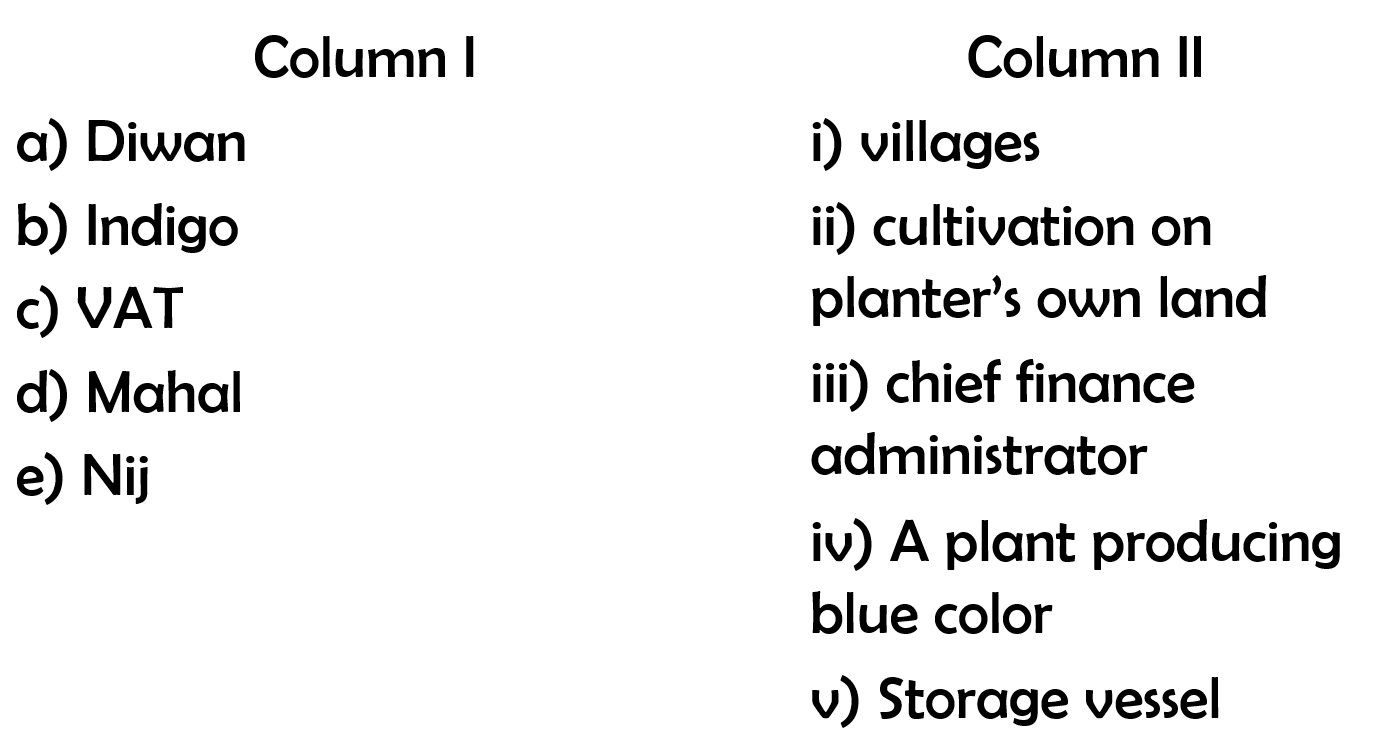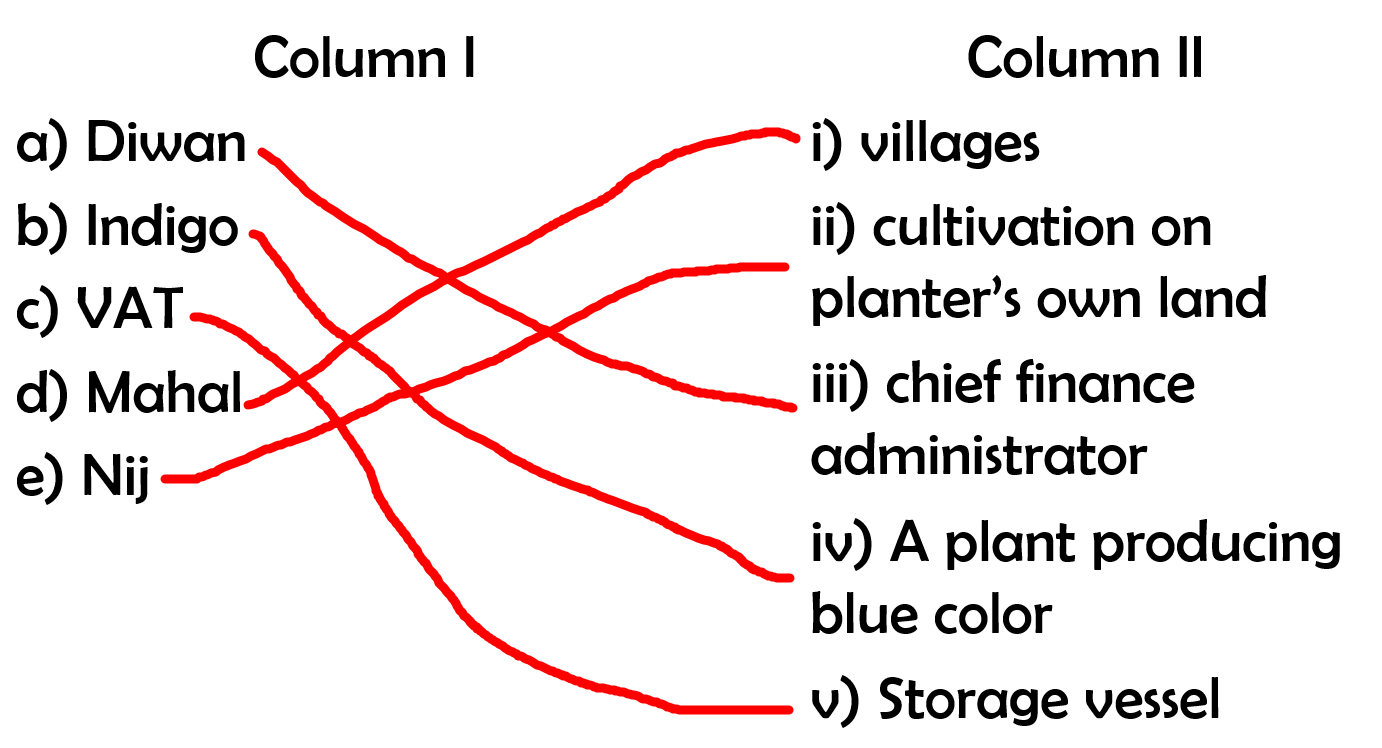Chapter 3 - Ruling the Countryside Extra Questions
Fill in the blanks:1. The Company was appointed as the Diwan of Bengal in _________.
2. Who devised the new system of revenue called Mahalwari? ______________.
3. Growers of woad in Europe saw which crop as competition to their earnings? ___________
4. Indigo production came down in Bengal in the year _________.
5. Who had developed the Munro system? ________________
6. The international demand of indigo was affected by the discovery of _____.
Answer:
1. The Company was appointed as the Diwan of Bengal in 12th August 1765.
2. Who devised the new system of revenue called Mahalwari? Englishman Holt Mackenzie.
3. Growers of woad in Europe saw which crop as competition to their earnings? Indigo
4. Indigo production came down in Bengal in the year 1859.
5. Who had developed the Munro system? Captain Alexander Read and Thomas Munro
6. The international demand of indigo was affected by the discovery of synthetic dyes.
State True or False:
7. The demand for indigo increased in the late seventeenth century.
8. Revenues were fixed in the Permanent settlement.
9. Mahalwari system came into existence in 1700.
10. Very high rate of revenue was the major problem of ryotwari system.
Answer:
7. False
8. True
9. False
10. True
Match the following:


Source-based question:
Read the following extract (Source-1) taken from NCERT textbook (Page-28) and answer the questions that follow:

ii) Who described the condition of the under-tenants?
iii) What was the condition of the under-tenants in Bengal?
Answer:
i) In many villages of Bengal, some of the powerful ryots did not cultivate, but instead gave out their lands to others (the under-tenants).
ii) In 1806, H. T. Colebrook described the conditions of these under-tenants in Bengal.
iii) The under-tenants, depressed by an excessive rent in kind, and by usurious returns for the cattle, seed, and subsistence, advanced to them, can never extricate themselves from debt. In so abject a state, they cannot labour in spirit, while they earn a scanty subsistence without hope of bettering their situation.
Picture-based question:
Observe the given picture taken from NCERT textbook (Page-27) and answer the questions that follow:

ii) Who came here regularly?
iii) Why did they come here?
iv) What is this otherwise known as?
Answer:
i) It is a weekly market in Murshidabad in Bengal.
ii) Peasants and artisans from rural areas regularly came to these weekly markets to sell their goods and buy what they needed.
iii) Peasants and artisans from rural areas regularly came to these weekly markets so as to sell their goods and buy what they needed.
iv) These weekly markets are also known haats.
No comments:
Post a Comment